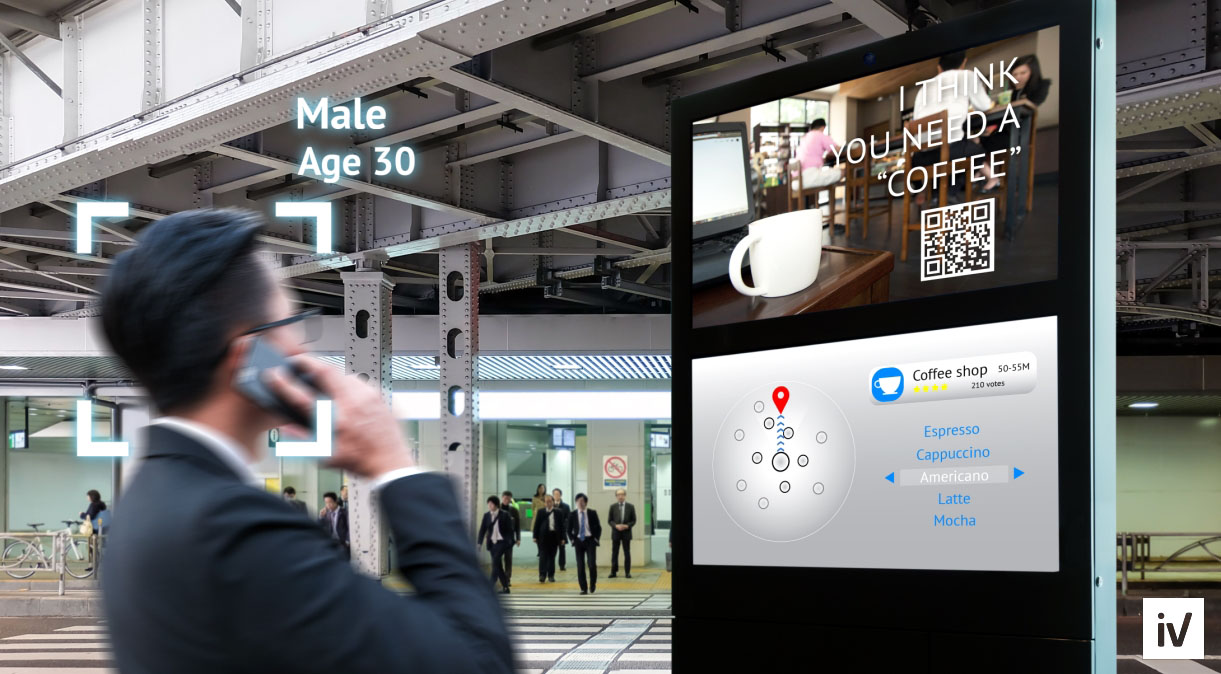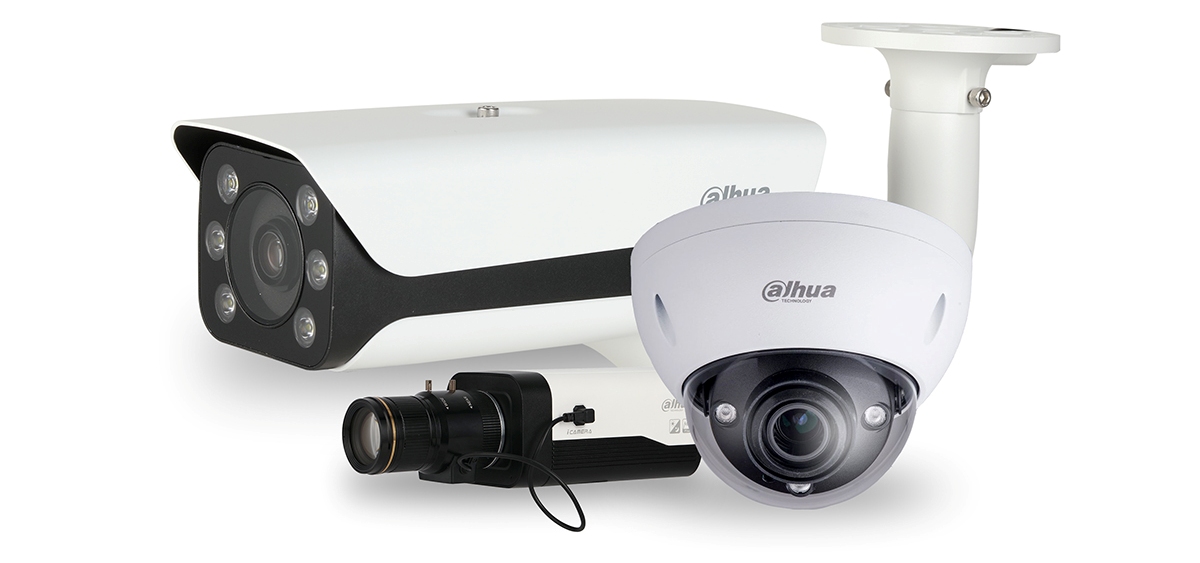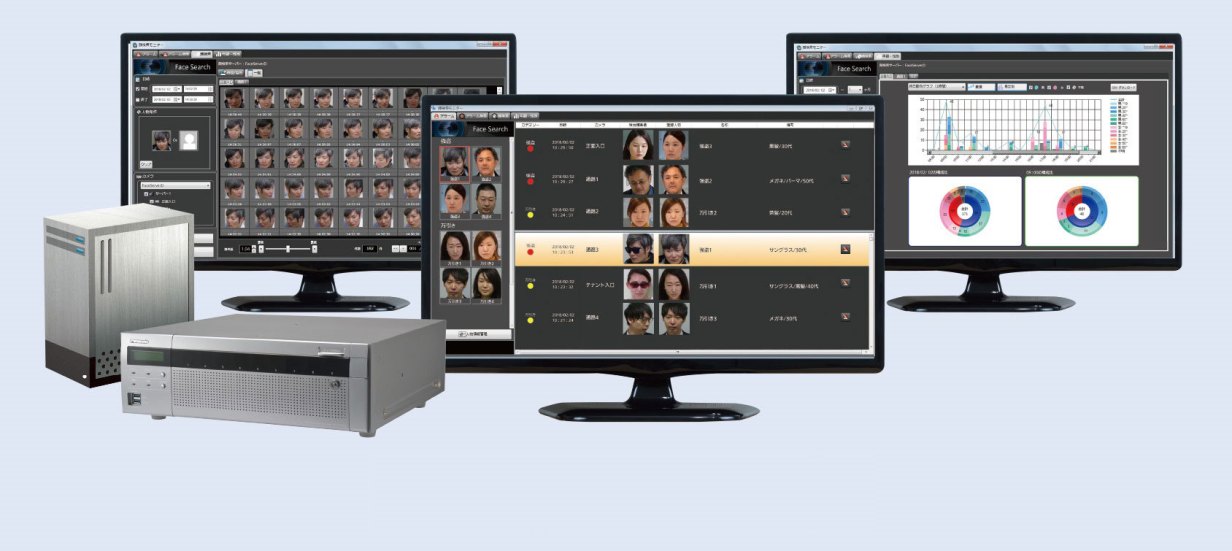 Near future
Near futureThere are several methods by which face recognition systems work, but in general we are talking about technology that can identify a person by a digital image or a frame from a video source.
Many smartphone owners use face recognition every day, but on mobile devices the recognition speed is not critical, and the number of users is rarely more than one or two people. For office and street systems (with mass recognition), other technologies are used.
Recently on Habré the
news was discussed: the Moscow network coffee shops Pravda Kofe and OneBucksCoffee began to test the face recognition service in their establishments.
Coffee houses use our technical solution. And today we will tell you more about it. Of course, we already spoke about the technology itself, but something new appeared - the solution became truly cloudy. And that all changes.
How face recognition technology works
The first thing the system needs to do is to select a face in the frame and using algorithms to make sure that it is a human face.
After the initial detection, various individual traits are determined by fixed points - for example, the distance between the eyes and dozens of other parameters are taken into account.
Further, other algorithms are searched for in various pre-created databases and give a percentage of similarity with the desired data sample. If the percentage of similarity is high enough, the face is considered recognized.
If you don’t go into details (the photo for analysis still needs to be normalized before being transferred to a neural network that reads some descriptor), the main complexity of the solution at the moment is not in the technologies (algorithms) themselves, but in the implementation.
Recognition systems are developing in several directions, classified according to the approach to information processing. Sometimes it’s hard to choose which system will do the job better.
Variety of systems

Data can be processed in the cloud, on local servers deployed in the enterprise security perimeter, or directly on cameras.
In the latter case, the entire analysis is carried out by the camera itself, and already processed information arrives at the server. The main advantage of the system is its high accuracy and the ability to "hang" a large number of devices on one server.
Despite the apparent simplicity and ease of scaling, this technology also has disadvantages. One of them is the high price. Plus, at the moment there is no single standard for the presentation of information that specialized cameras transmit to the server. And the data set can vary greatly between different vendors.
 Panasonic's “simple” face recognition system
Panasonic's “simple” face recognition systemSystems based on IP cameras with integrated video analysis are inferior in popularity to server solutions. But even if you use a traditional system based on a registrar and / or a local server, you will not be able to save.
Programs and prices * Face Recognition
* According to information from open sources.
Given the complexity of the algorithms and the high price of server equipment for video analytics modules, face recognition systems have long been an expensive pleasure.
In addition, the cost of the solution is influenced by the large network traffic generated during operation - in addition to the cost of powerful servers, I had to shell out for active network equipment and “thick” communication channels.
Today, there are several large players in the Russian market offering high-quality algorithms for analyzing and processing video data. They are united by an interest in projects related to large business. Explaining this focus is very simple - the cost of the solution goes far beyond the capabilities of small and medium-sized businesses.
SecurOS Face software.
The cost of a license for a face capture module is 41,275 rubles per channel. The software is installed on the face recognition server or on their detection server.
The cost of a license of the face recognition module per 1000 people in the database is 665,760 rubles. Installed on the face recognition server.
Russian developer of equipment and software for access control systems.
The cost of a license for the module for verification of persons for one camera is 50,000 rubles.
The cost of a license for a face recognition module for one camera is 7,000 rubles.
The price of a license for a base of up to 1,000 people is 294,000 rubles.
Intellect software for face recognition with memory for 1,000 face patterns in the database - 314,000 rubles.
The core of the system is 20,300 rubles. Connecting a video channel - 6,000 rubles.
Macroscop Basic face recognition module with a base size of up to 1000 faces - 240,000 rubles.
License to work with one IP camera - 16 500 rubles.
More recently, Macroscop solutions were used to ensure the security of only critical facilities with a large number of people: stadiums, airports, factories. But now the company supplies its product for retail. Price - 94,000 rubles for modules (registrars do not sell).
Software costs 79,000 rubles + 32,000 rubles per registrar. The company's customers are mainly large firms (factories, mining companies, universities, sports complexes). But the company focuses on traditional video surveillance, and not on face recognition. Although their DVRs are great for these tasks.
The company develops and sells only specialized facial recognition software. You have to choose the server configuration for data storage and processing yourself.
A cloud-based video surveillance and video analytics service that offered services to a budget-limited business. The
Ivideon Faces service works with almost any camera, the cost of connecting one device is from 3,150 rubles with an analysis of up to 100 unique faces per day and a basic record in the cloud archive for 5 days.
Hardware selection for Face Recognition systems
From one Full HD camera to process a video stream containing 10 faces in a frame, one core of the processor with a frequency of 2.8 GHz is required. If there are few faces in the frame (from 1 to 3), then one processor core can easily handle the processing of two video streams.
This example shows that even in a simple system, one must have a certain supply of hardware. After all, if at the same time not 15, but 15 people enter the object, then a second core with similar performance will be required.
Therefore, for the operation of the traditional system, taking into account peak loads, it is required to keep double reserve capacities.
To make it easier for you to imagine how much the traditional face recognition system costs, we will take an outlet as an example and calculate the cost of a traditional and cloud-based face recognition system.
Costing: the cost of a traditional face recognition system

Suppose we deploy a facial recognition system in a pharmacy network consisting of 16 points. On average, 500 customers visit each pharmacy per day.
In order to fully recognize faces, one rotary camera or a camera with a mechanized lens can be installed on each observation object.
In the case of using the traditional system, the costs will be as follows:
- Each pharmacy will require at least one specialized video recorder. Its retail value is approximately 40,000 rubles.
- Each registrar will additionally need a special hard disk (not to be confused with a conventional PC HDD) with a volume of at least 4 TB to record a video stream in 1920x1080 resolution at high traffic intensity. The average retail price is 10,000 rubles.
- The budget should include the cost of servicing the video surveillance system (for example, the installer’s trip to fix errors, update software or replace the HDD). The cost of such work is 12,000 rubles / year (once a quarter) for each object (in accordance with the price list of one of the installation organizations).
- The minimum cost of full-featured face recognition software is an average of 120,000 rubles per camera (unlimited time license).
- According to Backblaze, about 50% of all hard drives require replacement by the 6th year of operation. Thus, after 5 years of continuous operation, about 8 disks will fail, and provided that such a system does not provide for redundancy, on average, additional costs of 1.6 disks per year, or 16,000 rubles / year, must be made.
Capital costs (excluding the cost of cameras) will amount to 2,928,000 rubles / year.Cloud costs
In the case of a cloud system, the cost of a video surveillance tariff with recognition of 500 faces / day will be
4,750 rubles / month (57,000 rubles / year) per camera, or 912,000 rubles / year for 16 cameras .
Recall that the owner of the network will not have to purchase any additional hardware. Maintenance costs are also not needed, because all cloud servers are served by the cloud service provider in the data center.
There is a saving of more than 3 times during the first year of operation of the system.
Subtotal and additional “goodies”
In the calculations above, there is an important nuance: after 3 years of operation, the traditional system at total costs will become cheaper than cloud face recognition. Two factors to consider here.
Firstly , the equipment that the network owner will buy will become obsolete in 3 years of operation. But surely there will be new, more advanced technologies and face recognition algorithms that work on a more powerful hardware. And after 3 years, most likely, you will have to completely replace the equipment at the points.
You don’t need to do this with the cloud system - the service is being improved and updated constantly due to the development of algorithms and the growth of the computing power of data centers. Support for security standards is also not tied to hardware.
Secondly , saving money in the early years will allow you to wrap this money several times, bringing additional profit to the business.
The past, present and future of cloud face recognition
The evolution of recognition systems has accelerated in recent years. Not so long ago, instead of complex algorithms and neural networks, an ordinary security officer using a computer simply compared the persons recorded by the program with the databases and noted who all these people are.
In addition, the systems worked through local servers. Accordingly, for the service to work, the user needed to install a dedicated PC or a special video recorder. And this is the extra cost of equipment and the overhead of its operation.
Cloud face recognition does not require the purchase and configuration of any other equipment except cameras, and will work with those cameras that are already installed on the site.
No need to keep a staff of specialists to maintain the equipment. The problems of the technical condition of the equipment are solved by the service provider itself (and does this more efficiently than non-specialized companies).
Cloud recognition transforms a bulky and vulnerable system from on-premises analytic servers into a flexible, resilient cloud structure. In practice, this means that the recognition system no longer depends on the capabilities of a particular server purchased and installed in the client’s office, as well as the IT infrastructure that this client has. There is no need to purchase new equipment and for a long time to coordinate with the supplier configuration issues and the possibility of its expansion.
The cloud automatically distributes the load across the entire available infrastructure with powerful servers. The client does not need to keep rarely used capacities in reserve for work during periods of unexpected bursts of load (holidays, weekends). You can learn more about the capabilities of the system by
consulting with us.
True Coffee and OneBucksCoffee have now sparked a storm of discussion, but very soon there will be virtually no companies in the offline business without video analytics. Players in the consumer market have an urgent need to recognize their customers in person: personalize services and offers, analyze guest mood, reduce costs and return customers, rather than just buying technological solutions for the sake of reporting.